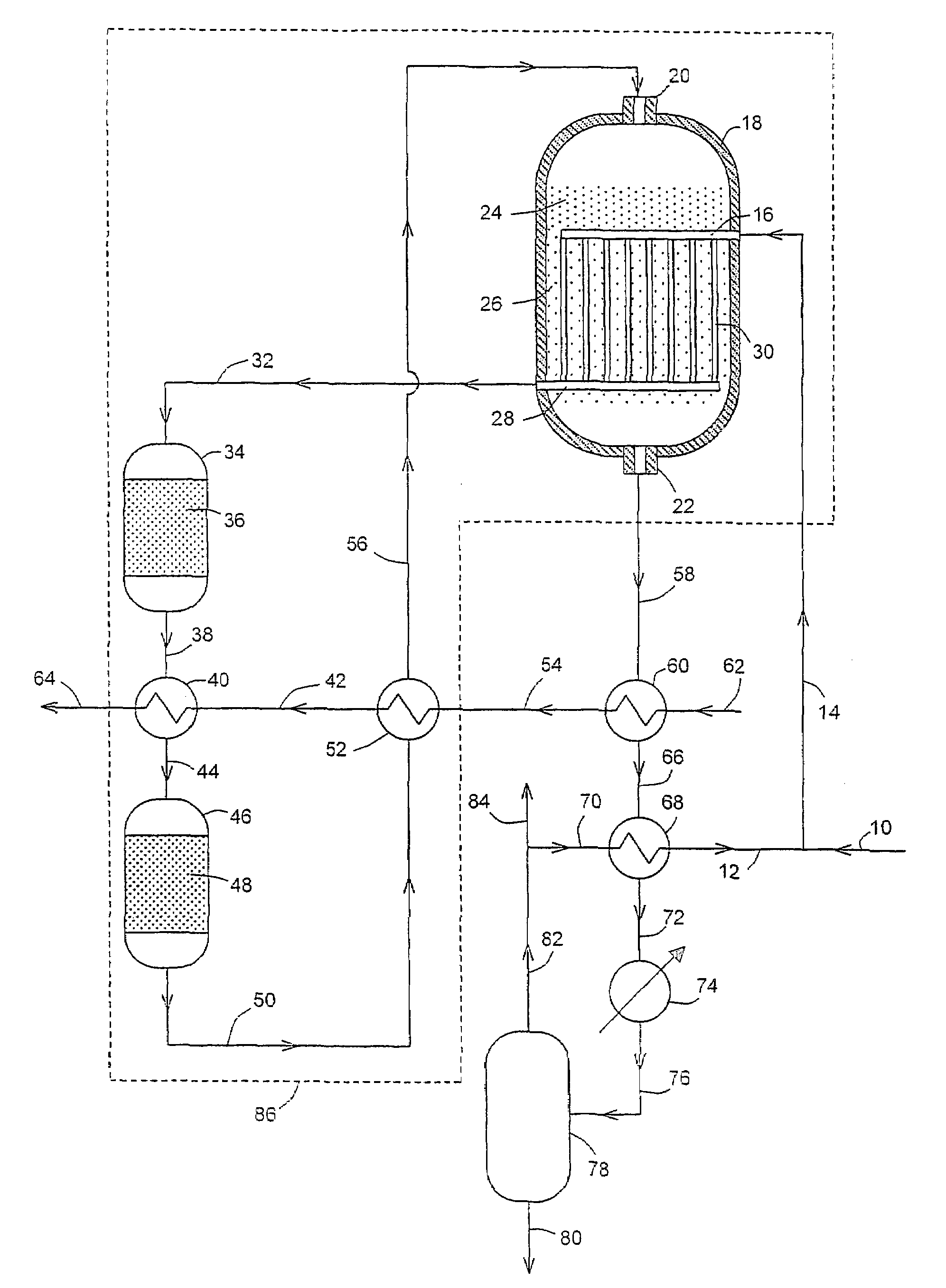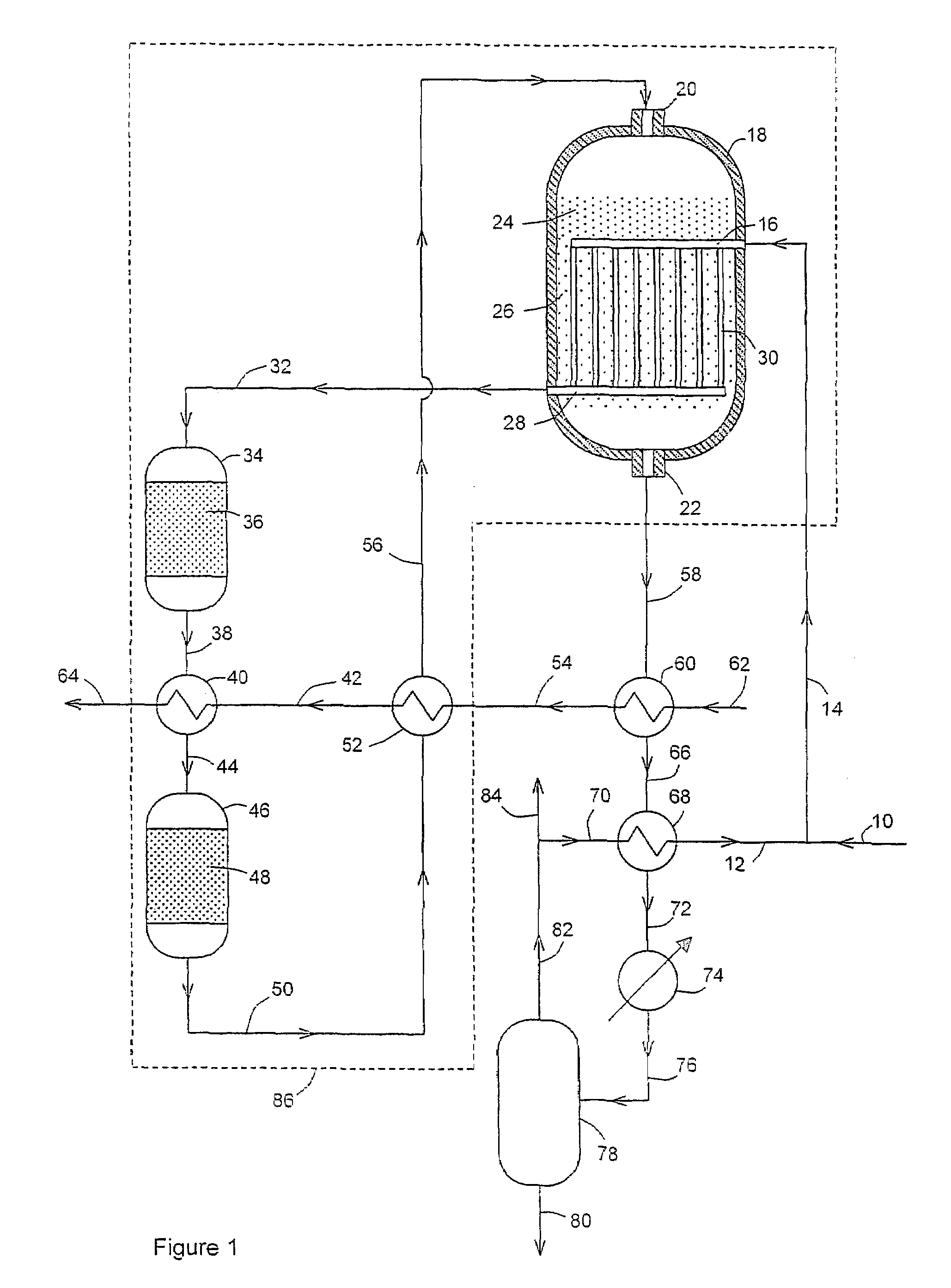Methanol synthesis
a technology of methanol and synthesis, which is applied in the field of methanol synthesis, can solve the problems of reducing the amount of heat recovered prior to the tube-cooled bed, not making the best use of the tube-cooled bed, and pre-heating the bed, so as to achieve efficient heat recovery and better control of the temperature
- Summary
- Abstract
- Description
- Claims
- Application Information
AI Technical Summary
Benefits of technology
Problems solved by technology
Method used
Image
Examples
example 1
[0037]In this example the flowsheet is as shown in FIG. 1. The results are shown in Table 1. For convenience of calculation and comparison, the volume of catalyst in bed 26 below the coolant outlet header 28 is assumed to be negligible.
[0038]
TABLE 1Pres-sureTemp(barFlow rate (kmol / h)stream(° C.)abs.)H2COCO2H2OinertsCH3OH1013085.0933019838753847601217785.0319375007862346721921416585.041267248316616151481923223084.541267248316616151481923827584.03881720861109613514811414423583.53881720861109613514811415027583.03743314911045678514818015624082.53743314911045678514818015824081.53505154987884451482908804580.310119818212698824580.335041548859265127211844580.3310349762454196220040.000038943005421439.500038943004223139.000038943006425038.50003894300
[0039]It is seen that the hot water stream 64 flow rate was 38943 kmol / h and the water temperature was 250° C. The total volume of catalyst required was 116.4 m3, with 24.1 m3 in bed 36, 19.6 m3 in bed 48, 27.7 m3 in bed 24 and 45 m3 in bed 26.
PUM
| Property | Measurement | Unit |
|---|---|---|
| temperature | aaaaa | aaaaa |
| pressures | aaaaa | aaaaa |
| temperature | aaaaa | aaaaa |
Abstract
Description
Claims
Application Information
 Login to View More
Login to View More - R&D
- Intellectual Property
- Life Sciences
- Materials
- Tech Scout
- Unparalleled Data Quality
- Higher Quality Content
- 60% Fewer Hallucinations
Browse by: Latest US Patents, China's latest patents, Technical Efficacy Thesaurus, Application Domain, Technology Topic, Popular Technical Reports.
© 2025 PatSnap. All rights reserved.Legal|Privacy policy|Modern Slavery Act Transparency Statement|Sitemap|About US| Contact US: help@patsnap.com



